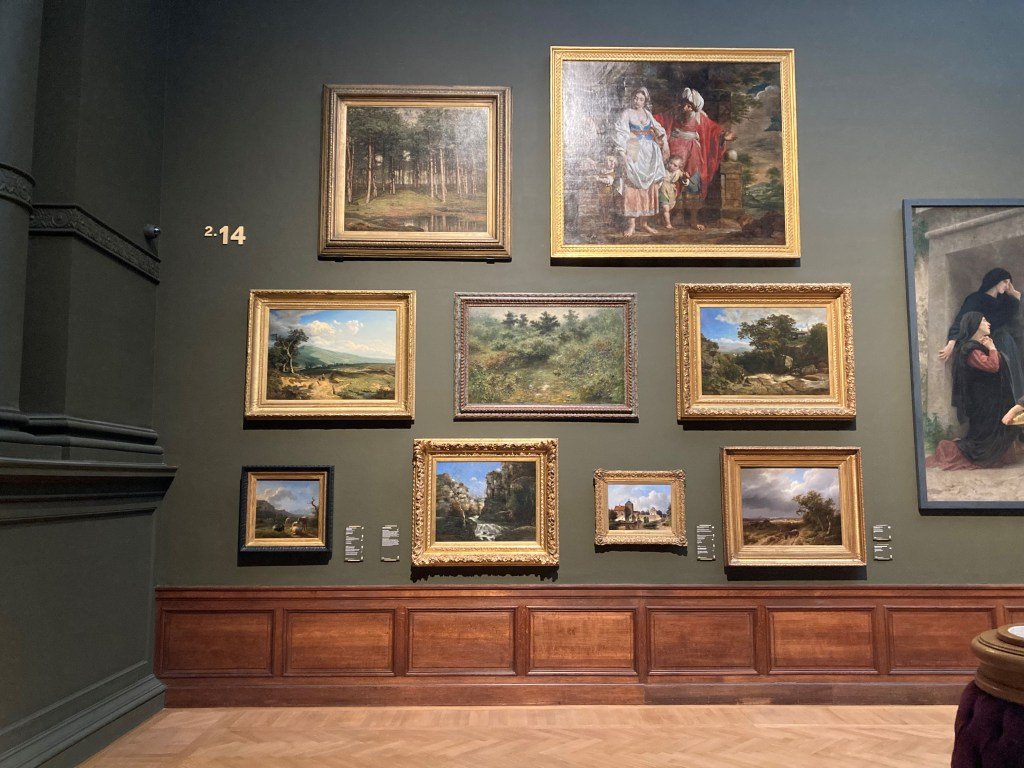A Visit to the Royal Museum of Fine Arts Antwerp (KMSKA)
The Royal Museum of Fine Arts in Antwerp (KMSKA) re-opened in 2022, after over a decade of major restoration and renovation work. First opened in 1890, the KMSKA now houses both old masters and modern art. Having moved to Belgium in 2013, I hadn’t visited the museum before its recent reopening and was excited to see the building and the artwork inside. In what follows, I share my impressions of what will surely be the first of many visits to the KMSKA.
On a chilly December weekend, I set off with a small group to the KMSKA. The museum is located in the Zuid district of Antwerp, along with the Museum of Contemporary Art Antwerp (M HKA), the Fotomuseum (FOMU), and many art galleries. I knew I would be seeing masterpieces by Rubens, Brueghel I & II, and Ensor but beyond that didn’t quite know what to expect. My curiosity grew as we approached the impressive building, with its columned facade and wide staircase, decorated with a celebratory red carpet.
The renovation project was designed by Rotterdam-based KAAN Architecten. The project involved restoring elements of the existing building and renovation work that created more space inside the building, which allows for the display of more artwork. This renovation created a space that feels like a contemporary museum inside of the old museum. After my visit, I was curious to learn more about the process of the renovation and was pleased to find all kinds of information on the museum website.
The artworks in the museum are divided into two main categories: works before 1880 and works after 1880. In the older part of the museum, some artworks are organised in a traditional salon style: multiple paintings are hung close together and at different heights. The walls in this part of the museum are painted warm, dark colours – deep greens and reds, colours selected with intention by KAAN Architecten.
KMSKA, view of a historic gallery
While there are clear nods to the past with hanging styles and colour palettes, contemporary artwork enters into dialogue with paintings in both the old masters and the modern art sections of the museum. We visited the old masters section first. Immediately striking was the presence of large contemporary sculptures among the masterpieces including a large rock and camel-shaped seating, where one would expect a typical bench.
Two contemporary installation sculptures by Christophe Coppens in the KMSKA
Belgian artist and opera director, Christophe Coppens created a project of ten installation sculptures, each inspired by a detail from ten selected paintings. In an interview, Coppens explains that the aim of the project is to “encourage thought and imagination”. The installations include sound and movement, their intended audience: children and their families.
In contrast to the warm tones of the old master’s section, the newly built modern art space is a contemporary bright white area—the entrance of which is aptly all about the theme of light. In the new museum section, artworks are organised by the themes of light, colour, and form.
My favourite part of the visit was seeing the paintings of twentieth-century Belgian artist Rik Wouters. In addition to having the largest collection of Ensor’s work, the KMSKA also boasts the largest collection of Wouters' work. The first painting of his that I noticed was a landscape. I was taken by the light and colour of the painting and spent quite some time with it before moving on.
In front of a Rik Wouters landscape in the KMSKA
Wouters' work is all about light and colour. Though a famous Belgian painter, I was not that familiar with his paintings and was happy to learn more about his work from the informative plaques. I learned that Wouters was inspired by Cézanne’s forms and Ensor’s colour palette. I particularly loved his self-portrait which, over one hundred years later, still feels very fresh with its abstract background.
Walking around that day, I noticed visitors of all ages. Children were excitedly pointing to and interacting with the contemporary installations of Coppens, and visitors of all ages were contemplating one painting at a time or taking in the atmosphere of an entire room. I was happy to see a sign for an open studio, which invites people of all ages and abilities to create their own artwork inspired by their visit.
The entrance to the Open Atelier in the KMSKA
I left the KSMKA happy to have braved the cold for a visit. There was so much to see that I am sure I will return. In the meantime, there are many interesting articles and videos on the KMSKA website that can deepen a visitor’s experience of the museum and inspire the next visit!
Thanks for reading!
If you like what you’re reading, please subscribe to my blog to get updates on my latest posts.





